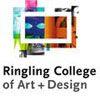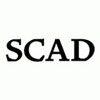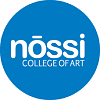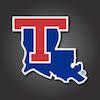

What are the top illustration schools in the South for 2021?
| Ranking | School | State |
|---|---|---|
| 1 | Ringling College of Art and Design | Florida |
| 2 | Savannah College of Art and Design | Georgia |
| 3 | University of Central Florida | Florida |
| 4 | University of Georgia | Georgia |
| 5 | University of North Carolina, Charlotte | North Carolina |
| 6 | East Carolina University | North Carolina |
| 7 | Watkins College of Art at Belmont University | Tennessee |
| 8 | University of Miami | Florida |
| 9 | Nossi College of Art | Tennessee |
| 10 | Louisiana Tech University | Louisiana |
Our 2021 rankings of the top illustration schools in the South. We define the South as Florida, Georgia, Alabama, Louisiana, North Carolina, South Carolina, Kentucky, West Virginia, Tennessee, Mississippi, Arkansas. For an explanation of our ranking criteria, click here.

Ringling College of Art and Design (RCAD) was founded in 1931 by Dr. Ludd M. Spivey, president of Southern College (now Florida Southern College) and circus baron, John Ringling. When it opened, the school had just 75 students and 111 course offerings. Today, RCAD serves more than 1,600 students from 45 states, 60 countries, Washington D.C., and Puerto Rico.
This private, not-for-profit college offers BFA degrees in eleven disciplines and BA degrees in two. Students in all programs benefit from RCAD’s “rigorous curriculum” that the school says “employs the studio model of teaching and immediately engages students through a comprehensive program that is both specific to the major of study and focused on the liberal arts.” Students also benefit from visiting artists from major studios such as DreamWorks and Blue Sky Studios, focused internship opportunities, and the chance to work with local businesses on real-world projects.
Program options for aspiring illustrators include a BFA in Illustration with a General Illustration or Visual Development Emphasis. The General Illustration Emphasis covers the fundamentals of color theory, composition, anatomy, and digital and traditional media. Offered in the Illustration Department, the program introduces and familiarizes students with professional industry techniques through exercises, demonstrations, guest speakers, critiques, collaborative projects, internships, recruiter workshops, and interactions with real clients in the area.
The Visual Development Emphasis “focuses on concept art, used by illustrators to convey ideas across the entertainment spectrum in industries including gaming, comics, and graphic novels, film, television (live-action and animated), video, toy design, themed entertainment, publishing, and advertising,” says the school. “Students will learn to visualize and create the art for characters and environments that is later used by modelers, animators, designers, visual effects artists, and other creatives to bring the ideas to life through production.”
Course highlights for the General Illustration Emphasis include 3D Design for IL, Advanced Illustration, Design & Typography, Digital Illustration, Figure Anatomy, Illustration Media, Professional Practices, and Visual Development I-IV. Course highlights for the Visual Development Emphasis include 2D Design, Development of Art and Ideas, Film & Narrative, Professional Practices, Visual Development I-IV, and Writing Studio.
Other highlights for the programs include the opportunity to enter a semester-long exchange program or a four-five week summer program at Studio Arts Center International (SACI), located in Florence, Italy, internship opportunities at major companies such as Abercrombie & Fitch, Blue Sky Studios, Disney, Hasbro, and Pixar, and participation in The Annual Illustration show, Illest of the Ill—a department juried exhibition curated and coordinated entirely by students.
Students in the programs also have access to two Cintiq labs solely for Illustration, access to three 24-hour Cintiq labs, painting and drawing studios, and a laptop for every student, fully equipped with the latest Adobe Creative Suite software.
Ringling College students have won more wards in the 40-year history of the Society of Illustrators than any other college, and comprise the highest number of accepted entries into the Society’s annual Student Scholarship Competition. Graduates leave the programs with a “comprehensive, cohesive portfolio” that showcases their work.
Employment opportunities include Advertising Illustration, Animation, Children’s Books, Editorial (book cover art, magazine, and newspaper), Interactive Web Illustration, Medical Manuals, Surface Design for Fashion, Medical Manuals, Technical Art, and Visual Effects.
Graduates of the programs have been hired by American Greetings, Apple, Blue Sky Studios, Cartoon Network, Disney, EA Games, GM, Google, Hallmark, Marvel Comics/Lucasfilm, Riot Games, United Airlines, Walt Disney, Zynga, and many others.

Savannah College of Art and Design (SCAD) was founded in 1978. In addition to the main campus in Savannah, SCAD has locations in Atlanta, Hong Kong, and Lacoste, France. Serving more than 14,000 students from all 50 states and more than 100 countries, the school offers more degree programs and specializations than any other art and design university. SCAD also offers plenty of opportunities to study art and design at domestic and international locations.
Offered through the School of Communication Arts SCAD offers a BA in Visual Communication with a Concentration in Illustration (Atlanta, Savannah), a BFA in Illustration (Atlanta, Hong Kong, Savannah), an MA in Illustration (Atlanta, Savannah, eLearning), and an MFA in Illustration (Atlanta, Savannah, eLearning). Minors include Animated illustration and Publication Design, Scientific Illustration, Illustration for Entertainment, and Illustration for Surface Design. Related degrees include a BFA in Sequential Art (Atlanta, Hong Kong, Savannah).
The Animated Illustration and Publication Design Minor is offered at the Atlanta, Hong Kong, and Savannah campuses. All other Minors are offered at the Savannah campus only. Minor programs are 25 hours and include courses such as Digital Illustration, Illustrative Anatomy and Perspective, Imaginative Illustration: Character Refinement, and Type and Image for Illustrators.
Students in SCAD’s Illustration degree programs will learn to create “fine-art drawings, bringing ideas, characters and personalities to life using both traditional and digital techniques,” says the school. Students will work in a “professional environment through a program structured like a working studio,” and they will “develop a personal style and technique, learning to express their own unique vision while forming a well-rounded perspective on design.”
Students in all programs have the opportunity to study outside of their main discipline by taking courses in Advertising, Graphic Design, Motion Media, Printmaking, and Sequential Art. Course highlights include Contextual Character Design, Directed Projects in Illustration, lllustrating Beyond the Page: The Narrative Experience, Illustration Business Strategies and Entrepreneurship, Illustration Markets, Illustration for Publications, and Materials and Techniques.
The BFA in Illustration has four Concentration options including Animated Illustration and Publication Design, Concept Design for Animation and Games, Illustration for Games, and Illustration for Surface Design. Each Concentration requires four courses, and students have the opportunity to choose from 10 elective hours to enhance their focus.
Graduates of the Illustration Programs at SCAD are prepared to take on careers such as Advertising Illustrator, Animation Character Designer, Art Director, Book Illustrator, Editorial Illustrator, Illustrator for Entertainment Design, Illustrator for Game Design, Storyboard Artist, and Surface Design Illustrator. Graduates have been recruited by A&E, Bento Box Entertainment, Comedy Central, Converse, Game Informer, ImagineFX, Revolver Studios, The New York Times, and Walt Disney Imagineering.

In 1968, University of Central Florida (UCF) opened in as Florida Technological University with less than 2,000 students. The first graduating class consisted of 423 students, and the school granted its first doctoral degree in 1977. Today, UCF leads all universities in Florida in conferring more than 17,000 degrees a year. Serving nearly 72,000 students, the school is also the largest university by enrollment in Florida and one of the largest universities in the nation.
UCF offers 103 bachelors and 91 master’s degrees, 31 research doctorates, three professional doctorates, and three specialist degree programs in 13 colleges. The College of Arts and Humanities at UCF houses the School of Visual Arts & Design (SVAD), which offers a BA with a Studio Track, a Studio Art BFA, and an MFA Program in Studio Art. UCF also offers a 24 credit hour Minor in Studio Art.
Specializations for the BA and BFA degree programs include Book Arts, Ceramics, Drawing and Illustration, Drawing and Printmaking, Painting, Photography, Sculpture, and Type and Design. The Studio Art BFA with a Specialization in Drawing and Illustration requires more credit hours than the BA with a Studio Track. The BFA is recommended for aspiring illustrators seeking immediate employment in the field or for students who plan to attend graduate school.
“The degree provides a solid foundation in techniques and theory in focused areas of competence,” says the school. BFA students must complete the Portfolio and Exhibit/Seminar courses and BA students must pass the Studio Art Portfolio Review.
Course highlights for the Illustration Programs include Advanced Drawing, Advanced Illustration, Art as Interface, Design Fundamentals-Three Dimensional, Intermediate Illustration, and Screenprinting. Students in all programs have the opportunity to complete an internship and participate in both local and international study experiences.
The MFA program requires 60 credit hours and students will have the opportunity to experiment with Traditional and New Media. Graduates are prepared for leadership positions in Art and Design, Education, Media, Publishing, and more.

Established in 1785, University of Georgia (UGA) is the state’s flagship institution. The university’s 17 colleges and schools enroll more than 38,000 students and offer 370 fields and areas leading to the bachelor’s, master’s, specialist education, professional, or PhD degree.
The Franklin College of Arts and Sciences houses the Lamar Dodd School of Art, which offers a BFA in Art with a Concentration in Scientific Illustration. “Students pursuing the BFA degree enter the School of Art as Intended Art majors,” says the school “and will apply to an area of concentration via the School's area portfolio review in the second year of study.”
Course highlights for the program include Advanced Drawing, Advanced Scientific Illustration, Anatomy of the Figure, Digital Narrative Systems, Graphic Systems, Illustration, Intermediate Scientific Illustration, and Special Problems in Graphic Design. The BFA also requires ARGD 3340 Senior Exit, which consists of the Senior Exhibition, Critique, Portfolio, and Evaluation.
Other program highlights include the opportunity to work and learn in dedicated classroom space, facilities and studio and hands-on experience through internships and study abroad experiences. UGA has more than 100 study abroad and exchange programs in 75 countries.
Graduates of the Scientific Illustration Program at UGA work at/for Academic Medical Centers, Advertising Agencies, Associations (trade or society), Federal Government (military), Hospital, Clinics, or Medical Practices, Medical Education Companies, Medical Legal or Law Firm, Pharmaceutical (device or biotech companies), Publishers (books or journals), Research Institutions, Science Communication or Animation Studios, Software/App Companies, Veterinary Schools, and more.

Founded in 1946, University of North Carolina Charlotte (UNC Charlotte) serves more than 30,000 students enrolled in over 200 undergraduate, graduate, and doctoral programs in nine colleges. The College of Arts + Architecture (COA+A) serves 1,000 student enrolled in 33 degrees and concentrations. The Department of Art and Art History here offers Art Education, Art History, Design and Studio Art programs.
The Department also offers a BFA in Art, Studio Art, with a Concentration in Illustration. Course highlights for the program include Children's Book Illustration, Illustration: Media/Method, Illustration Projects, Illustration Sequence/Story, Interactive Art and Design, Mixed Media Painting, The Figure in Illustration, Topics in Illustration, and Video Art. Students will also have the opportunity to participate in the BFA Illustration Exhibition, and complete a paid internship.
The COA+A has relationships with institutions such as the Bechtler Museum of Modern Art, Charlotte Ballet, Charlotte Symphony, Theatre Charlotte, the Blumenthal Performing Arts Center, and The Mint Museum. Students may also participate in the UNC Charlotte Study Abroad Program, which houses the recurring Summer Program in Rome, Italy.

Founded in 1907 as a teacher training school, East Carolina University (ECU) serves around 28,800 students, making it the third largest university in North Carolina. The school, which offers more than 200 undergraduate, graduate and minor programs, consists of 12 colleges and schools. The College of Fine Arts & Communication houses the School of Art and Design (SoAD), which offers an “umbrella degree” that allows students “to explore the School’s broad variety of disciplines,” says the school.
The BFA in Art offers 11 concentrations from Animation/Interactive Design and Illustration to Sculpture and Textile Design. The BFA is a professional art degree that prepares students for entry-level work in their chosen field. While a portfolio is not required for admission to the program, after two years of study, students are required to apply to their chosen area of concentration.
During the first year of in the SoAD, students will “build a foundation of critical thinking, making, and problem-solving skills. Utilizing the lenses of twelve disciplines, animation/interactive design, ceramics, drawing, film and video production, graphic design, illustration, metal design, painting, photography, printmaking, sculpture, textile design,” students will “build the art essential competencies and design thinking skills that will propel” them “to the next level of study.”
This innovative approach allows students to interact with faculty from across the skill, learn more about the unique disciplinary perspectives in the SoAD, and try new ways of thinking and making.
Students will complete an internship that will help them gain hands-on experience, and at the end of the program, students will complete a Film, Portfolio, Reel, or Senior Exhibition, depending on the Concentration. “This culminating experience is an important capstone experience that prepares” students to “pursue their professional goals beyond ECU.”
Other program highlights include access to mentors and professional advisors, extensive facilities in Jenkins Fine Arts Center, and the opportunity to apply to the SoAD Living Learning Community (A + D LLC). This residential campus community of undergraduate students focuses on learning more about art and design through exhibitions, field trips, and workshops created specifically for the LLC. Study abroad experiences are also available in locations such as the Krosno, Poland, Tuscany, Italy, and the United Arab Emirates (UAE).

Watkins College of Art at Belmont University (formerly Watkins College of Art, est. 1885) merged with Belmont University’s existing art and design programs in Fall 2020. Providing hands-on instruction in a studio setting, Watkins offers BFA degrees in Art Education, Design Communications (Graphic Design), Experiential Design and Studio Art, and BA degrees in Art and Art History. Minors are available in Design Communications, History, Painting, Photography, and Studio Art.
Graduate programs include a Master of Arts in Teaching (MAT) in Art Education and an MFA in Studio Art.
The Design Communications BFA offers a Studio Track that includes Illustration. During the first year of the program, all BFA students will take the same Core Foundation Studio courses. The sophomore year covers basic design principles, with classes gaining in complexity through the senior year.
Course highlights for the program include 2D: Principles of Color, 3D Design, Advanced Studies in Drawing, Advanced Studies in Figure Drawing, Advanced Studies in Painting, Art History I-II, Creative Visualization, Drawing I-II, Figure Drawing I-II, Figure Drawing: Identity and Branding, Illustration I-II, Interactive DesignNarrative and Advocacy Design, Painting I-II, and Printmaking I-II.
Other program highlights include mandatory attendance at a minimum of five student, faculty and guest exhibits, artist workshops, assemblies and master classes for each semester students are enrolled as a declared major (and two semesters total for all Art Minors), and participation in the Senior Exhibition. Throughout the program, students will work on a Professional Portfolio and upper-division students will have the opportunity to study in a foreign country. Internship opportunities (up to two) are also part of the program.
Students will intern in art related areas such as Advertising or Publishing, or at galleries. In recent years, Watkins students have gained experience at Advent, Anderson Design Group, Prosper Press (San Francisco), The Buntin Group, Vanderbilt University Creative Services, Warner Brothers Nashville, and many others.

Founded in 1925, University of Miami is a private research university that serves more than 17,000 students from around the world. More than 100 majors and programs are offered in 11 colleges and schools. Founded in 1926, the College of Arts and Sciences is the largest academic unit within the University of Miami, home to over 4,200 undergraduate students, 640 graduate students, and 450 full-time faculty. The College houses the Department of Art and Art History, which offers an MFA in Studio Art.
The MFA degree in the professional practice of studio art is a three-year program that offers the opportunity to Specialize in one of five Concentrations including Ceramics, Digital Imaging-Illustration/Photography, Painting, Printmaking, and Sculpture.
Students will take 24 credits in the Concentration, 12 elective credits, and nine in Art History. Several seminars are part of the program as well as an Exhibition Preparation course and the Master’s Thesis. “Each student's MFA thesis exhibition will be a solo show at the off-campus departmental gallery in Wynwood,” says the school, or at an alternative location, such as an art space or “commercial gallery that has been arranged by the student and approved by the Thesis Committee.”
Graduates will leave the MFA program with a polished portfolio of their work, which will allow them to seek positions in the professional, studio art world or teach in academic and other environments.

Nossi College of Art began as a Fine Art school in 1973. Today, the school also focuses on Business, Marketing, and Technology. With 300 students, Nossi offers undergraduate, graduate and certificate programs in Digital Photography, Graphic Design Media, Illustration (Commercial Illustration), Instructional Design and Technologies, Photography, Video & Film, and Web & Interactive Design.
Nossi’s Bachelor of Graphic Arts in Commercial Illustration consists of 136 curriculum hours, which includes general education and major courses. General Education course highlights include Art History Appreciation, Contemporary Math, and Success Strategies. Major course highlights include Adobe InDesign, Advanced Typography, Alternative Mediums, Book Publishing Illustration, Editorial Illustration, Exploring 3D, Graphic Design Advertising, Illustration for Stock Art, Illustration Materials and Techniques, Motion Graphics, Principles of Copywriting and Editing, and Sequential Art.
Students will also complete Business Marketing for Creatives, Independent Study (optional), and Portfolio and Promotion, which “provides students who are about to graduate an opportunity to explore the presentation and interviewing techniques used to find employment,” says the school. “Positive self-image and goal setting concepts are reintroduced,” in this course. “Students are expected to create communication materials for self-promotion and develop strategies for networking and community involvement, including internship opportunities.”
At the end of the Bachelor of Graphic Arts Program, students will “participate in a formal portfolio presentation of their work to the community and to their fellow students. They are given instructions in portfolio presentation and preparation for career opportunities.”
Graduates of Nossi’s Commercial Illustration Program are prepared to pursue positions such as 3D Modeling Artist, Book Publishing Illustrator, Comic Illustrator, Editorial/Advertising Illustrator, Fashion Illustrator, Illustrator Agent or Representative, Multimedia Artist/Animator, Package Designer, Political Cartoonist, Sequential/Concept Artist, and Sketch Artist.

Founded in 1894, Louisiana Tech University (LA Tech) is a four-year research university that awards awarding bachelor’s, master’s, and doctoral degrees. The school serves nearly 12,000 students enrolled in more than 70 degree programs concentrated in dozens of majors and fields of study. Programs are offered in five colleges including the College of Applied and Natural Sciences (ANS), College of Business (COB), College of Education (COE), College of Engineering & Science (COES), and College of Liberal Arts (COLA).
COLA houses the School of Design (SOD), which offers BFA degrees in Art Studio and Art – Graphic Design. The COES offers a BS in Biomedical Engineering (BSBM) with a Biology, Pre-Medical Illustration Concentration. A 45 credit hour Minor in Pre-Medical Illustration is offered through a partnership between the College of ANS, the COES, and COLA.
Students who complete the Minor will have fulfilled the prerequisites for application to graduate school in Medical Illustration. In addition, students in the program will gain experience working with clients, and they will have the opportunity “to build a portfolio that may include publication of their work in scientific periodicals and textbooks,” says the school. Graduates may also “pursue careers in biomedical research, medical school, physician’s assistant school, nursing, or another area of medicine.”
BFA in Graphic Design faculty “regularly offer courses featuring an advanced subject concentration to properly prepared students.” The curriculum requires four elective art courses, so students have the opportunity to create a concentration in areas such as Animation or Illustration.
The Art Studio BFA “is a professional program created to prepare students for a variety of opportunities and occupations within the growing field of visual arts.” Students in the program “work closely with dedicated faculty who provide extensive training and mentorship.” The curriculum offers courses in Art History, Design, Drawing, Illustration, Installation, Painting, Printmaking, Video and Digital Media, and more. Students may also add the Minor in Pre-Medical Illustration.
In the junior year of the program, students will begin to develop a professional body of work and portfolio. In the final year of the program, “emphasis is placed on professional practice, with a range of electives available in specific areas of art, culminating in a BFA Senior Exhibition.”
Other program highlights include dedicated illustration studio spaces, the three-course Professional Practices Curriculum, and internship opportunities.
The (BSBM) with a Biology, Pre-Medical Illustration Concentration is a unique program that prepares students for careers in Medical Illustration/Biological Sciences. First and second year students will take courses in the Natural Sciences, English, Humanities and Mathematics, totaling 62 credit hours. The third year of the program (30 credit hours) consists of Humanities, Social/Behavioral Sciences, and major courses such as Statistical Methods and Technical Writing.
Senior students will complete 28 credit hours Fine Arts, additional Social/Behavioral Sciences courses, and additional major courses such as Ecology and the Undergraduate Seminar.
The Pre-Medical Illustration Concentration consists of courses such as Advanced Communication Media, Digital Painting, Drawing, Figure Drawing, Human Anatomy and Physiology, Introduction to Graphic Design Software, Painting, Special Topics in Pre-Medical Illustration, Studio Problems. A Studio Art Internship is also part of the program.
